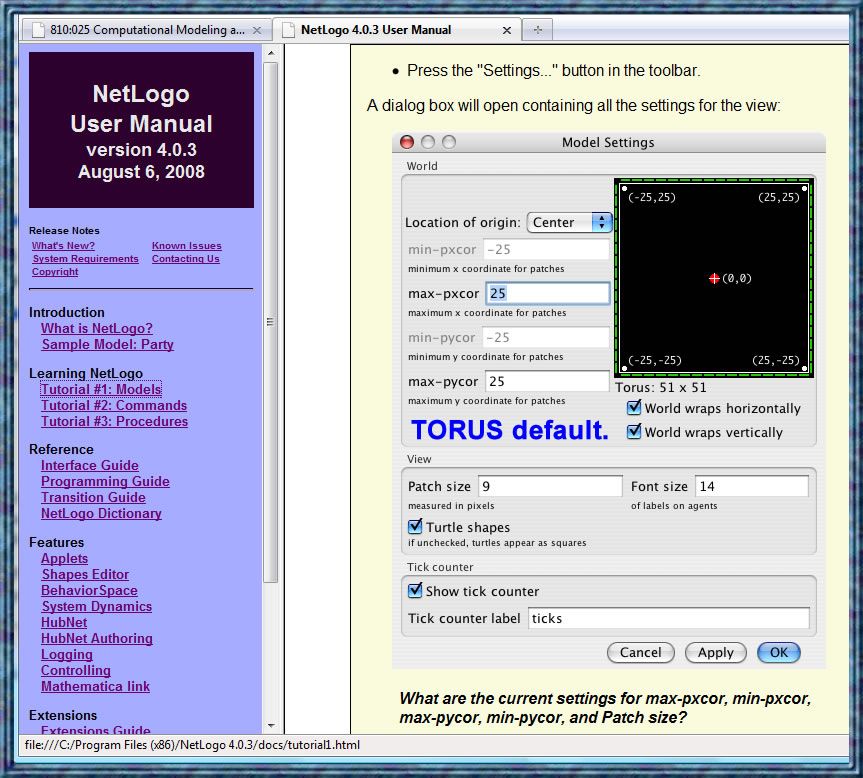The above is a PDF of questions on NetLOGO GAME of LIFE model along with NetLogo show the output...
- Worksheet done in class: Monte
Carlo With NetLogo... Answer questions 1, 3, and 4.
-
Tossint FRUIT Treats:
What
do we know? What is the GOAL? What is the formula? What part of
the formula is the unknown?
- Monte Carlo quiz:
Twenty
Darts in a rectangle. What is the estimated area of the OVAL?
- Draw
an Oval application... Cows and Houses and checkerboard on or off
of patches.
- Area between two circles:
Another
example using NetLogo. Stars, Leaves, and Cows.
- MonteCarloCircles.jpg
screen Photoshopped snapshot.
This problem sheet refers to the above JPEG snapshot and goes beyond the basics. You can do questions 1, 2 and 3 but do NOT worry about the material after that.
What is the output you would see on the NetLogo grid
after running the ExampleOne procedure?
(Draw a rough picture of about what it would look like).
TO ExampleOne
ca
cro 8
ask turtles [
fd 5
pd
fd 5
pu
fd 2
pd
fd 2
pu
fd 2
]
END
Show what the screen or the NetLogo grid would probably look like AFTER the following procedure ExampleTwo finishes.
(Note: there may be many possible drawings that get full credit for this
question. You will NOT be told this on the exam, but you are being
told this for this study guide). CRO versus CRT - VIP to know!
TO ExampleTwo
CA
CRT 8
ask turtles
[
PD
FD 8
]
END
to randomColorPatches
ask patches
[
ifelse random 100 < 30
[ set pcolor green ] ; Note: you might be asked to show the output of a NetLogo procedure that
[ set pcolor white ] ; included an ifelse, so be sure to understand how ifelse is used in this example!
]
end
SHOW THE OUTPUT, roughly what it would look like when stagger is done.
to stagger
ca
cro 8
ask turtles [ifelse remainder who 2 = 0 [ fd 5 wait 0.2]
[ fd 10 wait 0.2] ]
end
Just draw a picture of what the NetLogo window would look like after execution of stagger3 is done.
Copy and Paste the NetLogo code into your NetLogo if you want to see what the output looks like and verify you figured it out.
to stagger3
ca
cro 15
ask turtles
[ ifelse remainder who 3 = 0
[ fd 5 wait 0.1] ; the remainder was 0
[ ifelse remainder who 3 = 1 ; remainder was NOT 0
[fd 10 wait 0.1] ; the remainder was = 1
[fd 15 wait 0.1] ; the remainder was = 2
]
]
end
See the application with the two bouncing balls. RED uses Ease In and Ease Out to be a better model and simulation. GREEN does NOT use any easing in or easing out. Green Ball moves at a constant speed.
Example: The Flash bouncing ball with Ease In and Ease Out and without Ease In and Ease Out (not easing). What does the graph look like for EASE IN? For EASE OUT?
